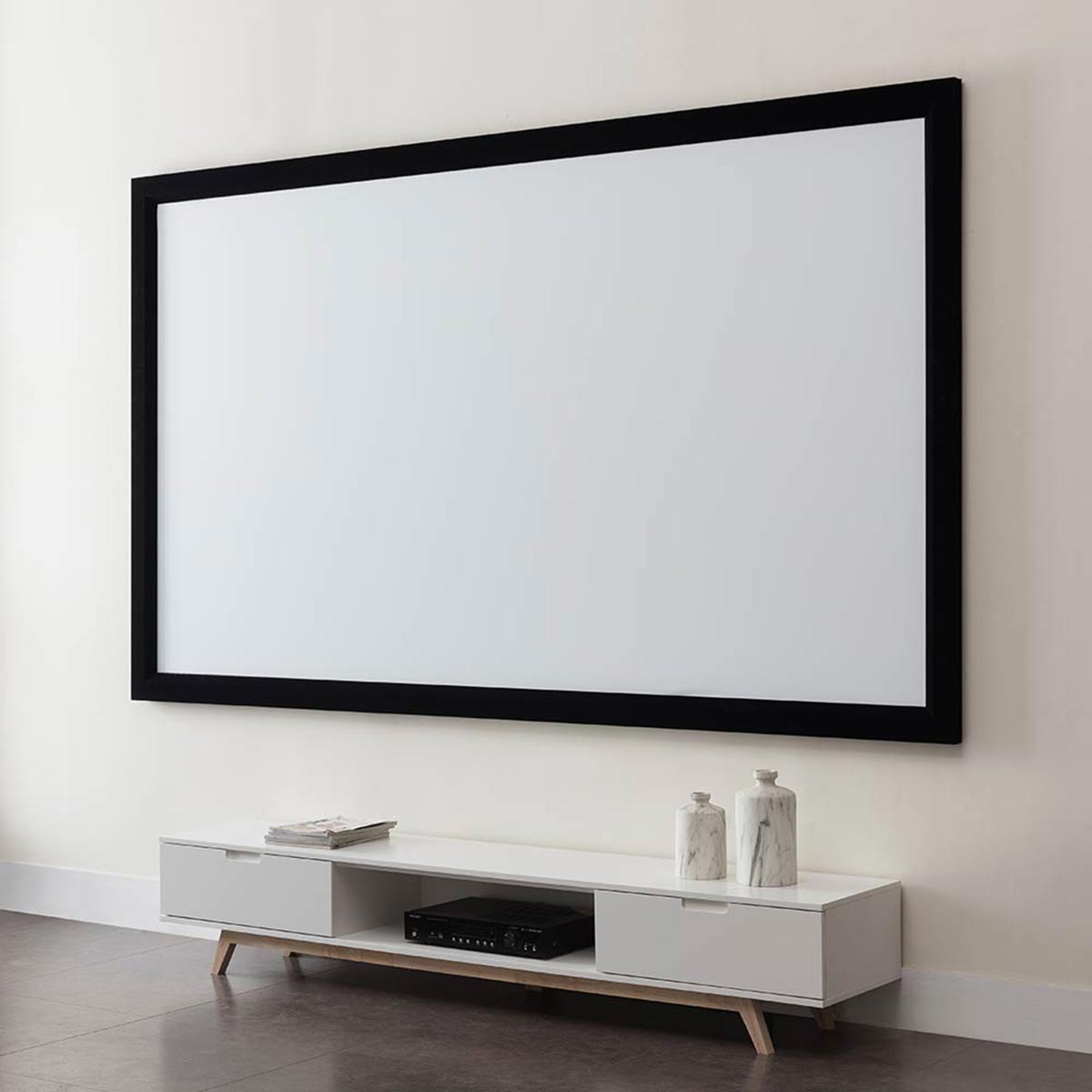Home>Furniture>Bedroom Furniture>How Often Can You Use A Tanning Bed


Bedroom Furniture
How Often Can You Use A Tanning Bed
Modified: August 17, 2024
Discover the answer to how often you can use a tanning bed and find the perfect bedroom furniture for your home.
(Many of the links in this article redirect to a specific reviewed product. Your purchase of these products through affiliate links helps to generate commission for Storables.com, at no extra cost. Learn more)
Introduction
Welcome to the fascinating world of tanning beds! These innovative devices have gained popularity as a convenient way to achieve a sun-kissed glow all year round. Whether you’re looking to maintain a tan during the cold winter months or acquire a golden hue for a special occasion, tanning beds offer a quick and efficient solution.
In this article, we will explore the ins and outs of tanning beds, including how they work, their safety measures, and the recommended frequency for their use. We’ll also delve into the potential risks associated with frequent tanning bed use and discuss alternative methods for achieving a beautiful bronzed complexion. So, sit back, relax, and let’s dive into the world of tanning beds.
Key Takeaways:
- Tanning beds should be used no more than 2-3 times per week to minimize UV exposure and reduce the risk of skin damage. Understanding your skin type and tolerance is crucial for safe tanning.
- Overusing tanning beds can lead to uneven tans, dry skin, and increased risk of skin cancer. Consider safe alternatives like spray tans and natural sun exposure while prioritizing skin health.
Read more: How Long After Tanning Bed Can You Shower
Understanding Tanning Beds
Before we discuss how often you can use a tanning bed, let’s start by understanding what tanning beds are and how they work. Tanning beds, also known as sunbeds or sun tanning beds, are devices designed to emit ultraviolet (UV) radiation to simulate the effect of sunlight on the skin.
Tanning beds consist of a structure equipped with high-pressure lamps or bulbs that emit UVA and UVB rays. These rays penetrate the skin, stimulating the production of melanin, the pigment responsible for the skin’s color. This process leads to the darkening of the skin, giving it a tan appearance.
Now, you might be wondering if tanning beds are safe to use. The safety of tanning beds depends on various factors, including the type of UV radiation emitted, the duration of exposure, and the individual’s skin sensitivity. It’s important to note that excessive UV exposure, whether from the sun or tanning beds, can have harmful effects on the skin.
When used in moderation and with proper precautions, tanning beds can be relatively safe. Modern tanning beds are designed with built-in timers and safety features to prevent overexposure. Additionally, many tanning salons provide trained staff who can guide you in using the beds responsibly and effectively.
Recommended Usage Frequency for Tanning Beds
Now that we have a basic understanding of tanning beds, let’s explore the recommended frequency for their use. It’s essential to follow professional recommendations to maintain healthy and safe tanning habits.
Professional recommendations suggest that it is best to limit tanning bed sessions to a maximum of two to three times per week. This allows the skin time to recover between sessions and reduces the risk of overexposure to UV radiation.
Several factors influence the frequency at which you should use tanning beds. These factors include your skin type, the intensity of the tanning bed, and your desired tan color. It’s important to take these factors into account when determining the appropriate frequency for your tanning bed sessions.
Different skin types have varying levels of tolerance to UV radiation. Fair-skinned individuals are more prone to sunburns and should be cautious when using tanning beds. On the other hand, those with naturally darker skin may require more exposure to achieve the desired tan.
It’s crucial to understand your skin’s sensitivity and gradually increase exposure time based on your tolerance. Starting with shorter sessions and gradually increasing the duration allows your skin to adapt to the UV radiation and minimizes the risk of burning or damaging your skin.
Potential Risks of Frequent Tanning Bed Use
While tanning beds can provide a beautiful tan, it’s important to be aware of the potential risks associated with frequent use. Excessive UV exposure can have detrimental effects on your health and skin.
One of the primary health risks of frequent tanning bed use is the increased exposure to UV radiation. Overexposure to UV rays can lead to sunburn, which can be painful and uncomfortable. Furthermore, long-term exposure to UV radiation from tanning beds can damage the DNA in skin cells and increase the risk of developing skin cancer.
Several studies have found a strong link between tanning bed use and an increased risk of skin cancer, including melanoma, the most serious form of skin cancer. The World Health Organization has classified tanning beds as a Group 1 carcinogen, placing them in the same category as tobacco and asbestos.
In addition to the risk of skin cancer, frequent tanning bed use can also accelerate the aging process of the skin. The UV radiation breaks down collagen and elastin, proteins responsible for maintaining the skin’s firmness and elasticity. This can lead to premature aging, including the appearance of wrinkles, fine lines, and age spots.
Damage to the skin doesn’t stop at premature aging. Frequent tanning bed use can also result in dryness, flakiness, and even long-lasting skin damage. It’s important to remember that the effects of UV exposure accumulate over time, and the damage caused may not become apparent until years later.
Considering these potential risks, it is crucial to approach tanning bed use with caution and moderation. Protecting your skin from excessive UV exposure is essential for maintaining its health and minimizing the risk of long-term damage.
It is recommended to limit tanning bed sessions to no more than 1-2 times per week to reduce the risk of skin damage and increase the longevity of your tan. Always use protective eyewear and follow the recommended exposure times.
Signs of Overusing Tanning Beds
It’s important to be aware of the signs that indicate overusing tanning beds. Recognizing these signs can help prevent potential harm to your skin and overall health. Here are some red flags and warning signs to watch out for:
1. Uneven or patchy tan: If you notice that your tan appears blotchy or uneven, it may be a sign that you have been overusing tanning beds. Too much exposure can lead to an uneven distribution of melanin, resulting in an unnatural-looking tan.
2. Dry and itchy skin: Overusing tanning beds can cause excessive drying of the skin, leading to itching and discomfort. If you find that your skin feels dry, flaky, or constantly itchy, it could be a sign that you’ve been tanning too frequently.
3. Sunburn-like symptoms: If you experience symptoms similar to a sunburn, such as redness, pain, and peeling skin, after using tanning beds, it’s a clear indication that you’ve overdone it. Sunburn is a sign of excessive UV exposure and should not be ignored.
4. Changes in skin texture: Excessive tanning bed use can result in changes in the texture of your skin over time. This can manifest as roughness, coarseness, or a leathery appearance. Such changes in skin texture are often irreversible and can indicate long-term damage to the skin.
5. Increased sensitivity to the sun: Overusing tanning beds can make your skin more sensitive to natural sunlight. If you find that you burn easily or experience heightened sensitivity to the sun even after minimal exposure, it could be a sign that your skin has been compromised by excessive tanning bed use.
If you notice any of these signs, it’s essential to give your skin a break from tanning beds and consult with a healthcare professional if necessary. Moderation is key when it comes to tanning bed use, and listening to your body’s signals is crucial for maintaining healthy skin.
Read more: How To Use A Stand-Up Tanning Bed
Alternatives to Frequent Tanning Bed Use
If you’re concerned about the potential risks associated with frequent tanning bed use, there are alternative methods available to achieve a beautiful tan without the harmful UV radiation. Here are a couple of alternatives worth exploring:
1. Spray Tans and Self-tanning Products: Spray tans and self-tanning products have come a long way in providing a safe and effective way to achieve a natural-looking tan. These products contain Dihydroxyacetone (DHA), a chemical that interacts with the amino acids on the skin’s surface to produce a temporary tan. Spray tans can be applied at salons, while self-tanning products are available in various forms such as sprays, lotions, gels, or mousses for at-home use. They offer a convenient and customizable option to achieve a tan without UV exposure.
2. Natural Sun Exposure and Outdoor Activities: Enjoying natural sunlight through outdoor activities can also help you achieve a tan. Spending time outdoors, particularly during the early morning or late afternoon when the sun’s rays are less intense, allows your skin to gradually develop a tan while enjoying the benefits of fresh air and physical activity. However, it’s crucial to practice sun safety measures, such as wearing sunscreen, protective clothing, and seeking shade when the sun is at its strongest.
Both spray tans/self-tanning products and natural sun exposure offer safe alternatives to frequent tanning bed use. Remember to select products that suit your skin type and always follow the instructions provided to achieve the desired results.
Ultimately, the best approach to tanning is to prioritize your skin’s health. Embracing your natural skin tone and protecting it from excessive UV exposure is the key to maintaining healthy and beautiful skin in the long run.
Conclusion
Tanning beds can provide a convenient way to achieve a sun-kissed glow, but it is crucial to approach their use with caution. Understanding the potential risks and guidelines for usage is essential for maintaining the health and safety of your skin.
Professional recommendations suggest limiting tanning bed sessions to a maximum of two to three times per week. Factors such as skin type and individual tolerance to UV radiation should also be considered when determining the appropriate frequency for tanning bed use. It is always important to start with shorter sessions and gradually increase exposure time to avoid overexposure and potential skin damage.
Frequent tanning bed use comes with potential risks, including increased exposure to harmful UV radiation, an elevated risk of skin cancer, and premature aging of the skin. Recognizing the signs of overusing tanning beds, such as uneven tan, dry and itchy skin, or changes in skin texture, can help you identify when you may be tanning too frequently and take necessary precautions.
Fortunately, there are safe alternatives to frequent tanning bed use. Spray tans and self-tanning products offer a temporary tan without the harmful effects of UV radiation. Natural sun exposure through outdoor activities, while practicing sun safety measures, can also help achieve a tan responsibly.
In conclusion, the key to a healthy and beautiful tan lies in moderation and prioritizing skin health. Whether you choose to use tanning beds in moderation or explore alternative methods, always be mindful of the risks and take the necessary precautions to protect your skin. Your skin will thank you in the long run, and you can enjoy a beautiful glow while maintaining its overall health and vitality.
Frequently Asked Questions about How Often Can You Use A Tanning Bed
Was this page helpful?
At Storables.com, we guarantee accurate and reliable information. Our content, validated by Expert Board Contributors, is crafted following stringent Editorial Policies. We're committed to providing you with well-researched, expert-backed insights for all your informational needs.















0 thoughts on “How Often Can You Use A Tanning Bed”